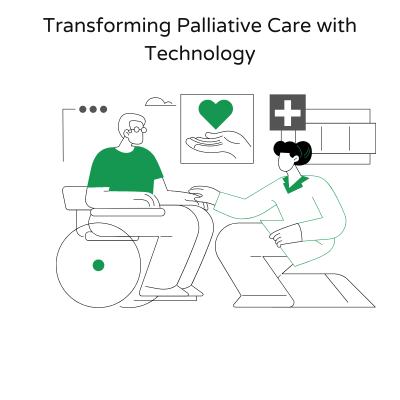Transforming Palliative Care with Technology

Palliative care is dedicated to enhancing the quality of life for those living with serious illnesses. However, challenges arise when it comes to managing complex symptoms, coordinating care providers, providing timely care, and addressing psychological needs, especially when patients are being cared for at home or where access to healthcare infrastructure is a challenge.
The emergence of technologies like telemedicine, smart sensors, wearable tech, and even robotics have helped address some of these challenges in developed countries. In countries like India, where access to palliative care is still a major challenge, it is vital to leverage cost-effective and easily available technology to expand the reach of palliative care. This could include using mobile apps, telemedicine, and simple devices for monitoring patients at home.
By embracing such technologies, we can enhance the quality of care for patients, especially in remote or underserved areas.
Boosting Palliative Care with Technology
Let’s take a look at how technology has helped make palliative care more accessible and convenient.
Telehealth
Using technology to deliver healthcare services remotely plays a crucial role in extending palliative care to even the remotest corners. Telehealth platforms enable patients to connect with palliative care professionals through video calls or phone consultations. This comes in handy, not just for patients in remote locations but for those unable to travel due to physical limitations or financial constraints. These platforms also act as training tools, allowing palliative care specialists to conduct virtual workshops for local healthcare providers.
Electronic Health Records
Electronic health records are pivotal in streamlining patient information management, especially when a patient is on a treatment plan. These systems provide a cohesive platform for care teams, ensuring seamless communication and efficient sharing of patient data, allowing palliative care teams to be more informed. That being said, the technology is still relatively new, and there is a bit of a learning curve when it comes to using it effectively and keeping security and confidentiality at the core.
Virtual Support Groups
Virtual support groups harness the power of technology to create a sense of community. They allow patients and family members who are going through similar journeys to connect with others, irrespective of geographical boundaries, giving them a space to share experiences and coping strategies. A space where emotional support is readily accessible, thus reducing the feeling of isolation. These groups are often moderated by palliative care professionals who provide guidance and facilitate discussions.
Mobile Apps
There’s an app for everything, including palliative care. Palliative care mobile apps offer symptom tracking and management features, offering real-time information and guidance on managing these symptoms at home. Other features include medication reminders, activity reminders, and status updates, which help coordinate care plans, share updates, and address concerns. PalliKare, Palliative, and PalliMEDS are a few examples of apps that support patients and the palliative care team.
A Step in The Right Direction
Everyone struggling with a long-term, serious illness has the right to palliative care to ensure that despite the limitations of their illness, they can enjoy the best quality of life possible. The integration of technology into healthcare has helped make palliative care accessible and viable to more people. As this integration continues to evolve, the future holds promise for further innovations, ultimately creating a more compassionate and inclusive healthcare system.





